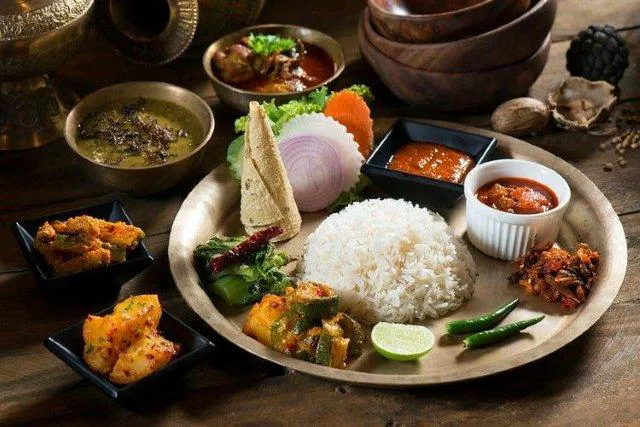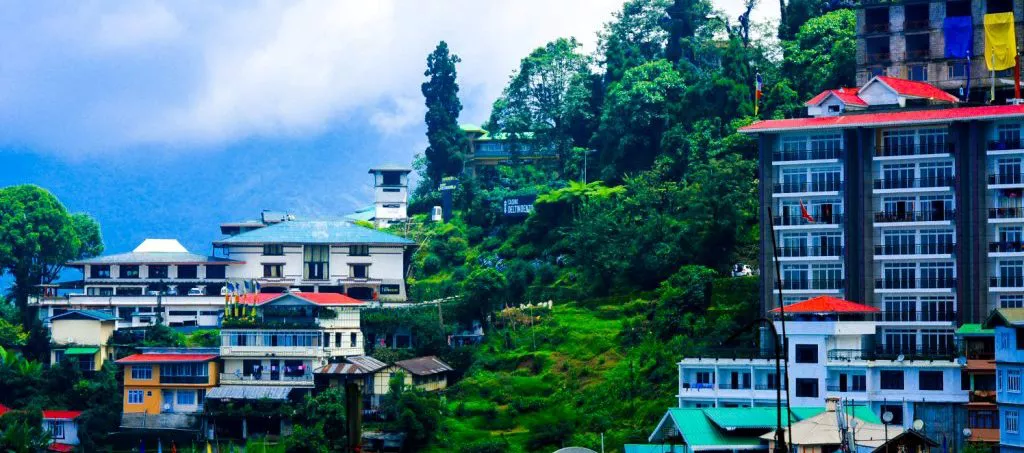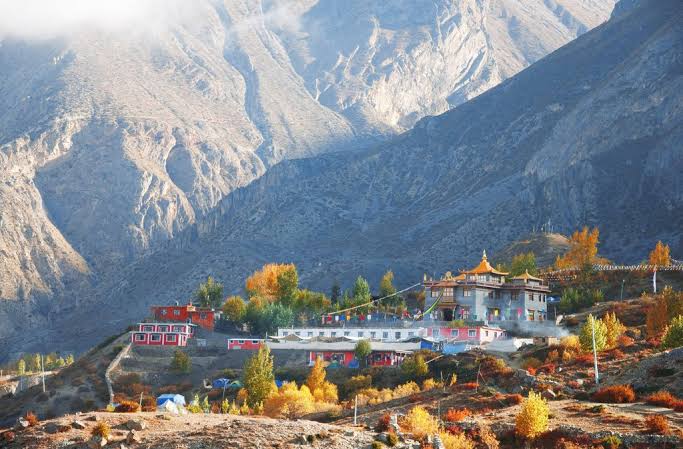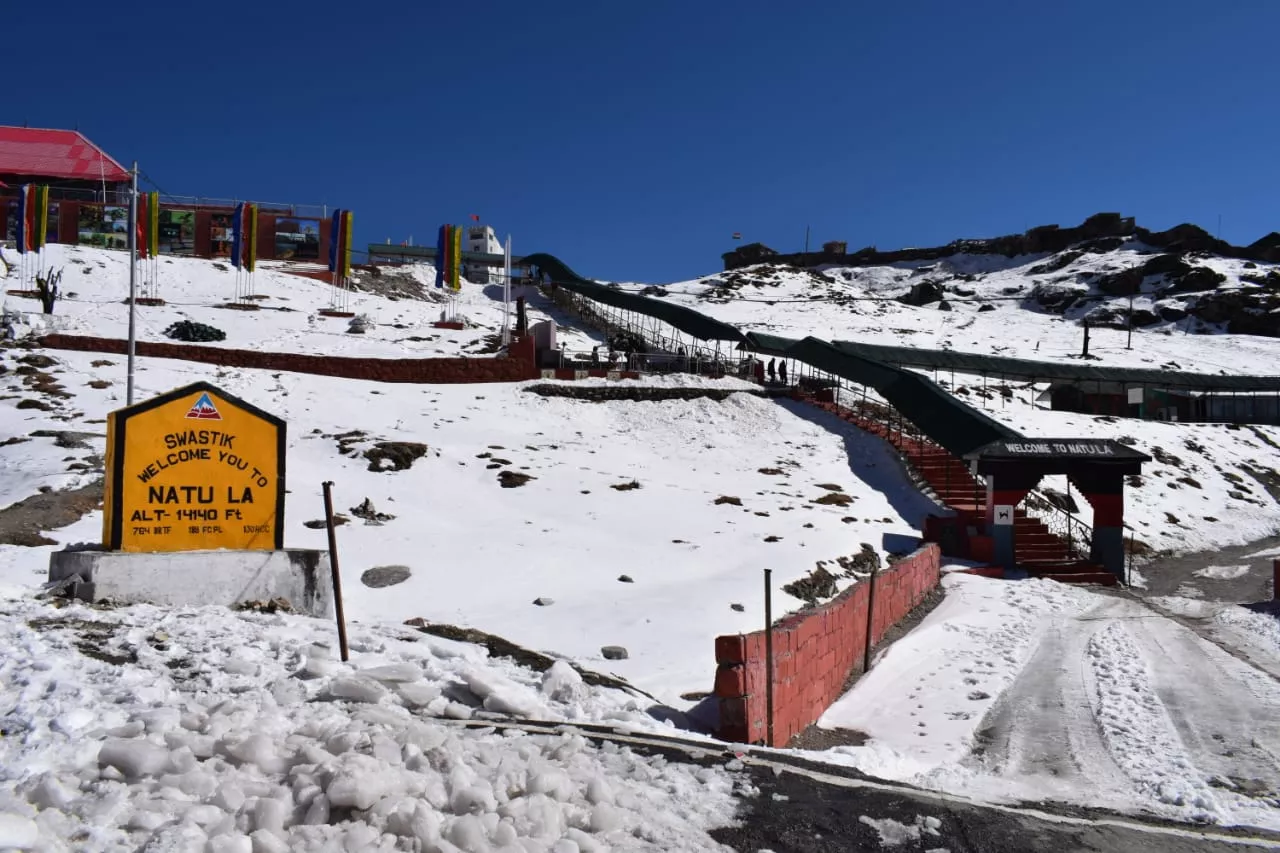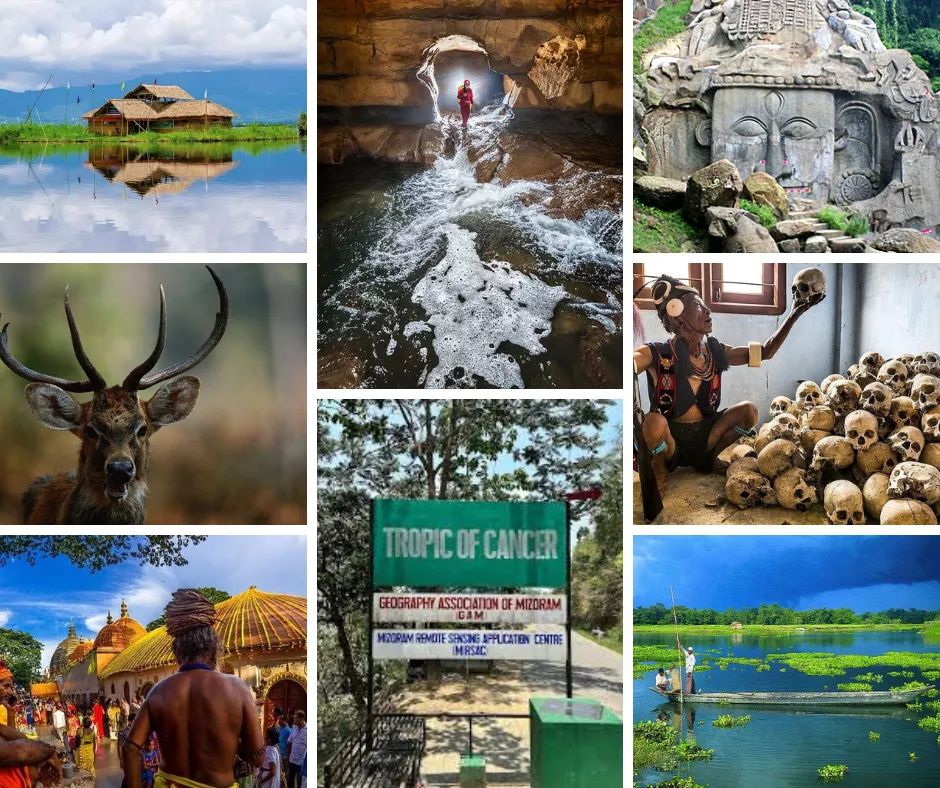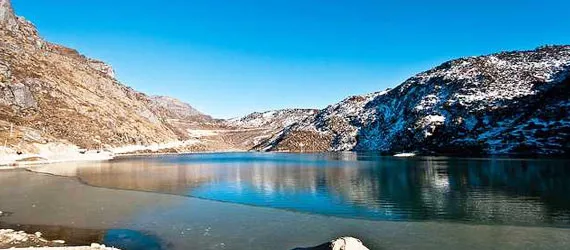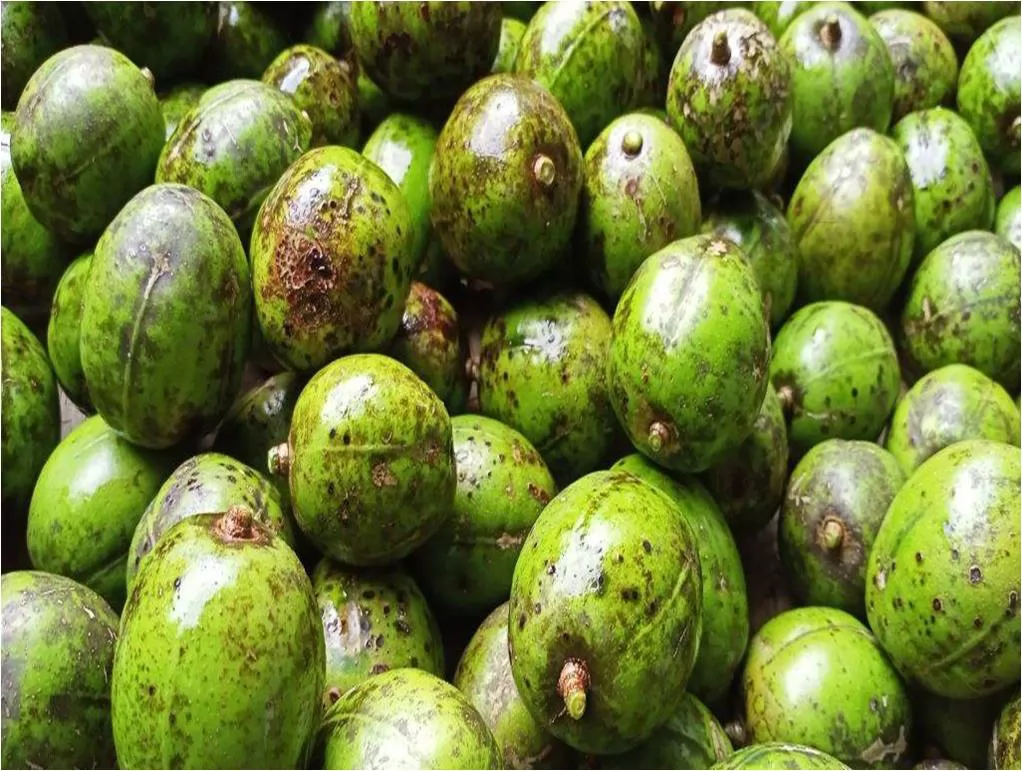
The eastern Himalayas are home to many fruits that are native to this region and scarcely found elsewhere. One of such fruits native to Nepal is the lapsi or Nepalese hog plum. This subtropical fruit grows on deciduous trees that grows to almost 20 meters high and grows with plenty of sunshine and rain. The trees flower during March-April and fruits are ready to harvest around October-January. The trees are not just prized for the fruit but wood from the tree is also used for making furniture. Though native to Nepal, the trees are also found in North-eastern parts of India like Sikkim, Darjeeling, as well as other countries (where it reached through people) like Vietnam, Mongolia, and China etc.
The hog plum or lapsi organically ripening on the tree
The fruit itself if described looks like a cross between a plum and an olive with a dark green tough and fibrous skin, which turns greenish-yellow when ripe. The outer cover is inedible but boiled, dried and used as a souring agent just as tamarind or sumac (from the Middle-East) in pickles. The flesh of the fruit is extremely sour and tough when unripe and becomes soft while acquiring a rather pleasant tart taste when ripe. There is not much of the flesh as the 3 cm long fruit contains an almost equally large brown seed inside of it, which is firmly attached to the flesh. These seeds are prized by school kids who love to play with them as marbles or spin them as tops. In some rural villages of Nepal, the seeds are also used as cooking fuel.
The fruit is known to be a rich source of essential amino acids, minerals and ascorbic acid and is commonly used for the treatment of cardiovascular diseases in Vietnam and China. However closer to home, it is a part of the lip smacking food of Sikkim and Nepal where it is usually transformed into mouth-watering pickles and preserves.
Preserved whole lapsi with skin
The process always begins with washing and boiling the fruits till tender. This makes peeling the skin away easier. Once this is done, the fruit is turned into one of the many treats the locals here have grown to love. The most famous of these forms is the lapsi ko titaura/ mada or lapsi candy. The boiled pulp (either whole or de-seeded) is mixed with salt, sugar, dhulo/ raung khursaani (dry red chilly powder), asafetida, ground sweet spices, etc. and sun-dried. Once completely moisture-free, these candies can be stored for more than a year. While the candy made with the whole fruit (seed intact) is the traditional form with big grains of sugar on it and tends to spicier, the other variation is in the form of chewy fruit rolls called lapsi ko mada. While the process remains more or less the same, this variation of the titaura is where the pulp is deseeded, seasoned and then dried by spreading into on trays till it acquires a leather-like texture. They are then cut into narrow strips and used as an after-meal palate cleanser. There is also a variety sold which is not as spic as these and is also a deseeded variety which is spread thicker and cut into bite-sized rectangles for sale. The final variety is again the same mix but in a wetter form called lapsi ko jhol titaura which is sticky and sweeter, but cannot be stored for too long.
A few forms of lapsi tituara/mada/candy found in Nepal and Sikkim
The above are all made commercially nowadays as making it at home can be quite laborious. Instead households make and have another favourite avatar of lapsi, called lapsi ko achaar or sweet and sour pickle made from lapsi fruit. Every house boasts of a secret recipe passed down through grand moms, generations after generations.
Women of the community busy with preparing lapsi ko achaar during season time
No food of Nepal is complete without it and is also a hot favourite in Sikkim. It is made of ripe fruit which is boiled till tender and then cooked in mustard oil, dried whole red chilies, turmeric, fennel and fenugreek seeds, ground spices, salt, sugar etc. till all the spices are well blended and most of the moisture evaporated. It is cooled and transferred into glass jars to be relished for years if it can be left alone. However, most households run out of it before the year turns due to its high demand or unexplained disappearances if there are lots of kids at home.
Home-made lapsi ko achaar (pickle)
There is an ominous myth associated with this fruit, which says that wherever this tree grows, calamity follows. Hence it is not usually planted in home compounds but grown in uninhabited places like forests. Culturally, it has been a central feature in the food of Nepal, especially in the lapte bhwey (a traditional feast of Newars, the dominant community of Nepal) where it is served as a thick soup called pau kwa and is a palate cleanser third course between the usual four courses. It is said to aid in digesting the rich foods partaken during the feasts. The Nepali disapora worldwide also claims lapsi as one of the top things they miss about home, momos being on the top of the list.
You can buy the candies anywhere in Nepal or when you travel to Sikkim & Darjeeling as they are widely consumed in these regions. The pickles however, are tricky to procure and mostly seasonal. The best way is to make friends locally and get a jar made by your friend’s mom/ grandmom. Do reach out to our local experts for recommendations on things to try in Nepal or when it comes to food of Sikkim/ food of Nepal when travelling here.
